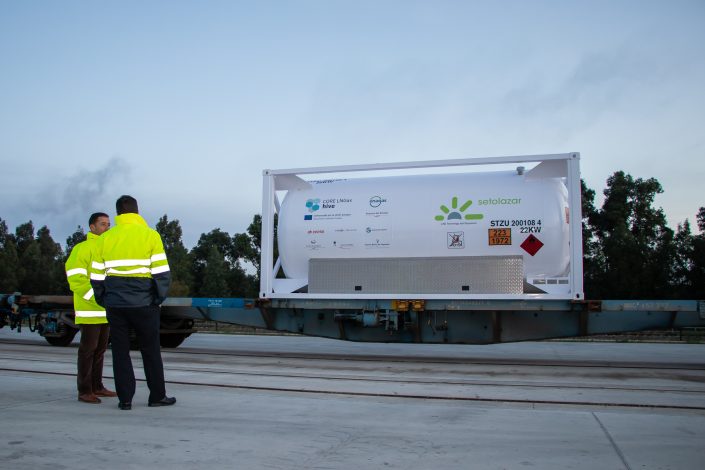
The CORE LNGas hive project has successfully carried out the first pilot test of multimodal transport of liquefied natural gas (LNG) in Europe. The initiative has consisted of transporting LNG in an isocontainer — a type of special tank container, adjusted to ISO standards, for the cryogenic transport of liquefied gases — from Huelva to Melilla, by road, rail and sea.
The LNG was loaded into the isocontainer at the Enagás Regasification Plant located in the Port of Huelva. From there, it was transported by truck to the Huelva Port Railway Terminal, where it was transferred to a train. The train travelled to Majarabique station (Seville), and from there it was transported by truck to the Port of Algeciras (Cadiz). There, it was transferred to a vessel which made the journey from Algeciras to Melilla.
This pilot test demonstrates the effectiveness of the isocontainer as a versatile and flexible solution for transporting natural gas. It facilitates the loading and unloading of LNG and can be easily handled from one means of transport to another, allowing the gas to travel long distances in a faster and safer manner. At the same time, it highlights the efficiency of the railway as a new key logistics solution to respond competitively to the growing demand for alternative fuels. This opens up the possibility that new locations and markets access LNG.
The success of the initiative has been possible thanks to the partners of CORE LNGas hive who participate in this activity of multimodal LNG transport: Enagás, Renfe Mercancías, Cepsa, the Port Authorities of Bahía de Algeciras, Huelva, Melilla and Cartagena. Also, the project had the collaboration of Crisergas, which carried out the transport operations of the isocontainer under the logistic supervision of Cepsa, and the company Setolazar, owner of the isocontainer.

